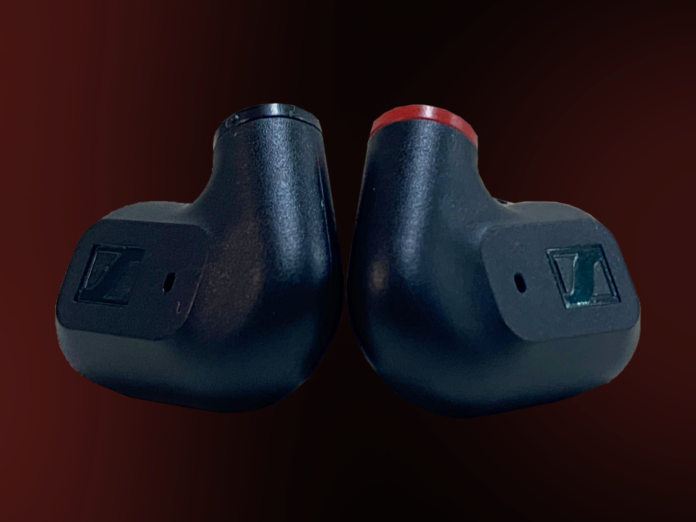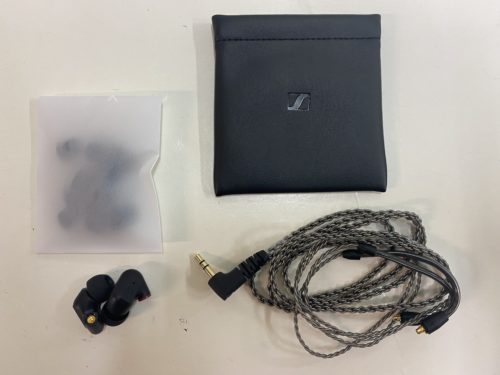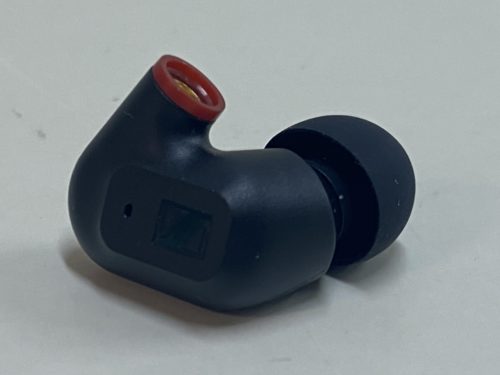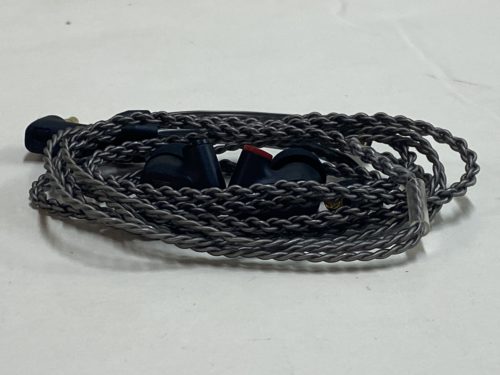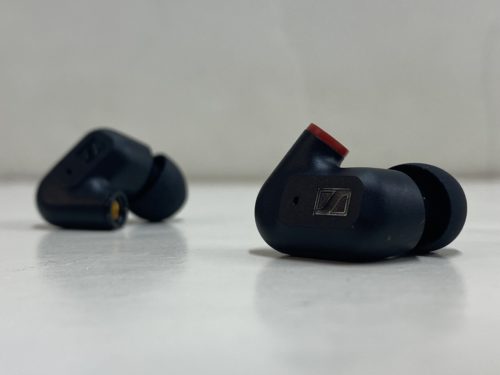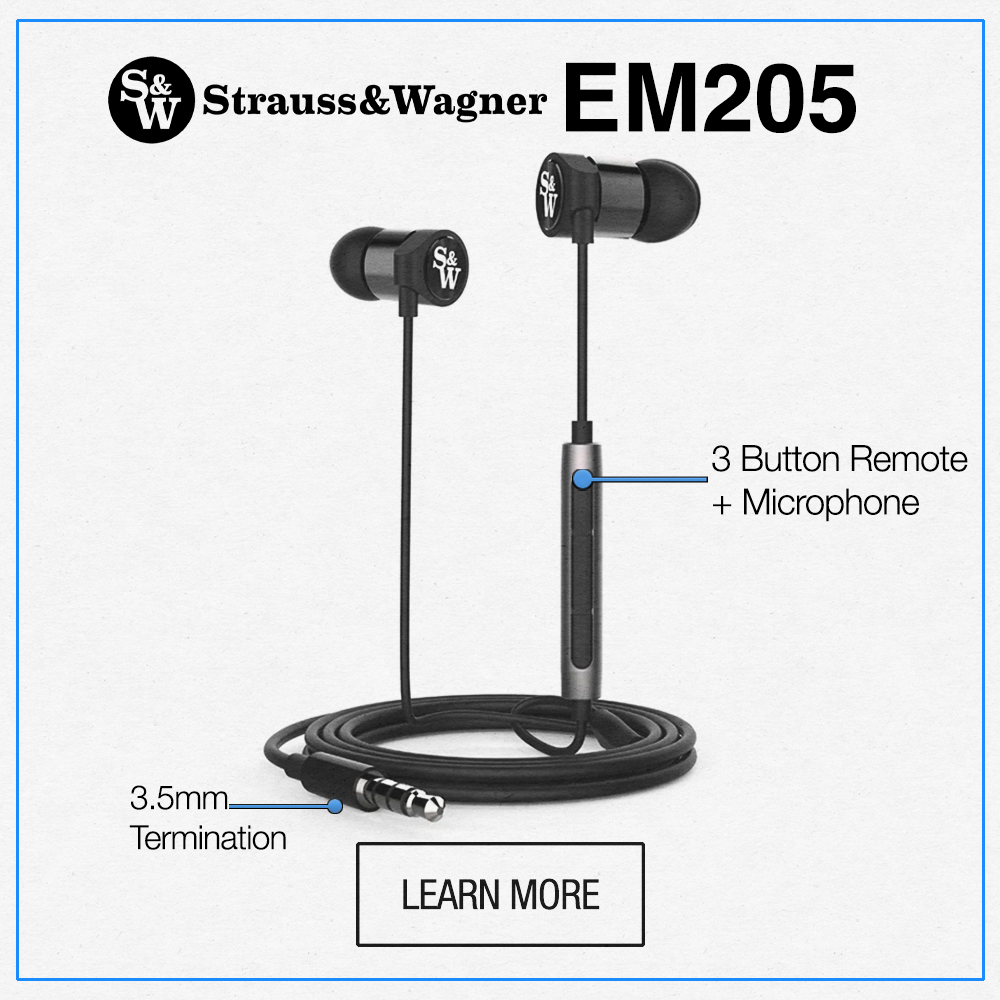Sennheiser has been knocking it out of the park with their IE series IEMs. The IE 600 and IE 900 are amongst some of the best in their price ranges and have made Sennehsier a dominant brand in yet another audiophile space. Now, Sennheiser looks to scale back a bit with their IEMs and focus on a more budget-friendly product. The new IE 200 is the latest set of IEMs from Sennheiser, and it only costs $149. Although the price is more economical, this is still a competitive field, with a ton of other brands also having strong budget-fi contenders. Can the IE 200 compete with them?
What You Get
- IE 200 Earphones
- Braided Cable with MMCX Connectors and 3.5mm Plug
- Silicone and Memory Foam Sets (S, M, L)
- Pouch
- Safety guide
Look and Feel
The IE series has a singular design that works. Sennheiser has kept the same style of build for a few different models now, and I’m a fan. On the IE 200, you get the same small-sized housing, now sporting an all-black shell. It’s not exactly the most striking IEM I’ve seen, even ones priced the same way. As for the fit, the IE 200 is just as comfortable as the other efforts from this series. It’s light and naturally sits in your concha with plenty of sustainability and support.
Design
Like many Sennheiser in-ears, the IE 200 contains their usual 7mm True Response dynamic driver. With it, Sennheiser touts almost zero harmonic distortion with the IE 200 and a balanced sound output thanks to its diffuse-field equalization. I primarily used the IE 200 with an iPhone 11 and a simple DAC dongle, and I thought the IEMs were surprisingly power-hungry for what they are. The impedance is only 18 Ohms, but the IE 200 seems to want more power than you’re expecting, as any simple 3.5mm headphone jack would give me only a thin sliver of headroom.
Soundstage
With the IE 900 and IE 600, Sennheiser is reminding everyone what they can do in the soundstage department. The IE 200 is a much more budget-friendly product than those two, so comparing the soundstage and imaging presented here with them doesn’t matter as much. Of course, these one hundred and fifty dollar IEMs don’t stack up to six hundred and fifteen hundred dollar IEMs. The soundstage just doesn’t span as wide, or layer the mix as deeply as those earphones can. As the IE 200 stands against other IEMs in its price range, I think they come out quite strong. For the price, the IE 200 is one of the most natural and balanced soundstages I have come across.
Some IEMs, particularly in the chi-fi market, like to show off with a wider and more airy presentation. In comparison, the IE 200 focuses on perfecting the basics of a good soundstage. Each performance feels evenly distributed, and the IE 200 positions each element in a space that is easy to localize. Mixes appear a lot purer, while also displaying a more intimate headspace for everything to play in. There is still a considerable amount of space between each performance, and it makes all the difference when you want to fully immerse yourself in a track. Its spaciousness is both wonderfully absorbing and precise. This might be the most captivating linear response I’ve listened to in a while.
Low End
The IE 200 brings it in the bass response, with a controlled thickness and satisfying punch. It doesn’t go particularly deep, but the tone forms a bodied sound that’s easy to be gripped by. Frequency content mostly pools around your jaw, but the sub-bass did show rare instances of subtle vibration from the throat. You get a warm timbre that resonates in a way that feels engulfing without clouding the rest of the midrange in a fog. These lows offer more liveliness than you might think, as it supplies you with realistic details that still find a way to come off excited.
Mids
There is a lot the midrange has to offer on the IE 200. You don’t get much recession from the fundamental mids, but it does emphasize some regions over others. The low-mids take most of the dominance in the response, and it gives instruments some meat. It pushes density toward a specific region, but the rest of the frequency response gets detailed treatment too. They’re not quite as powerful as the low-mids, but still, showcase strong clarity and raw features. Certain performances feel totally transparent, particularly with acoustic guitars and tracks with brighter piano sections. Notes hit with plenty of room in the mids to display natural tails and fill out the response with plenty of texture. Vocals also sit well within the scale of the mix and even stick out a bit above the rest of the sound elements.
Highs
In the treble, the IE 200 has some bright spots. While I never felt any areas of tone were harsh, there is a lot of intensity to this response. Sibilant features make themselves known in the sound signature, and they resonate with a crisp timbre that you will definitely feel, especially when listening at high volumes. You’ll get a ton of frequency content put into a tight space, still able to offer sizzle and glistening qualities where it can. Not much height is gained from its extension, but the wealth of high-end tones is still concentrated and stacked precisely.
Summary
For this reviewer, the Sennheiser IE 200 is another winner. It is both in line with the standard of quality that Sennheiser puts out, and totally unique for this price range. The sound signature is one of the best linear responses I’ve listened to in quite a while, and It kept me feeling the energy of each track I put through it with impeccable resolution. There are spots where there’s coloration, but overall the sound signature just feels really true to form. Combine that with the same style of fit and design from the IE 600 and IE 900, and you’ve got one of the new best budget-fi IEMs.
| Pros | Cons |
|
|
The Sennheiser IE 200 is available at Audio46.
Compare the ranking of various headphones, earbuds and in-ear monitors using our tools.
Discuss this, and much more, over on our forum.
---MAJORHIFI may receive commissions from retail offers.


